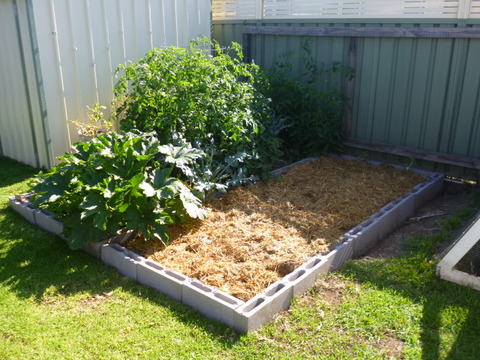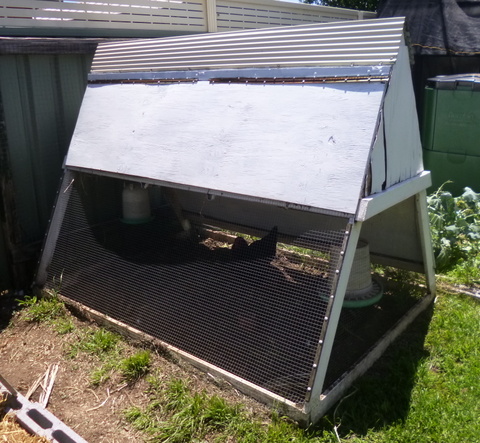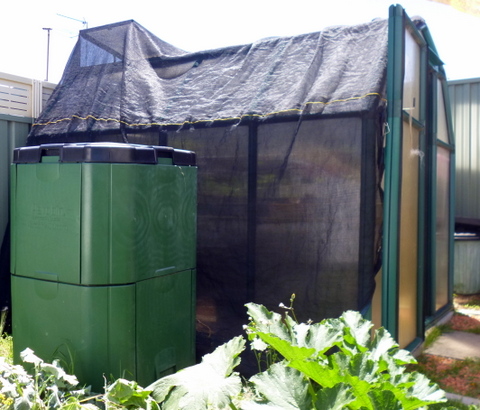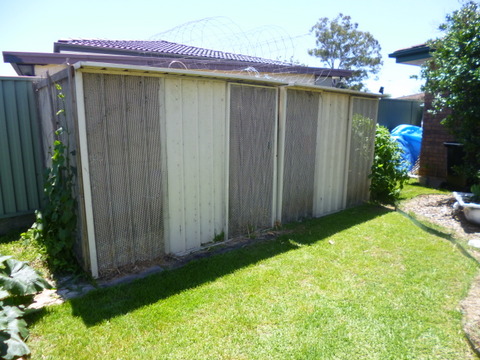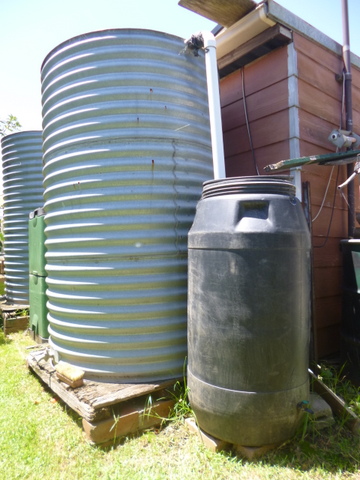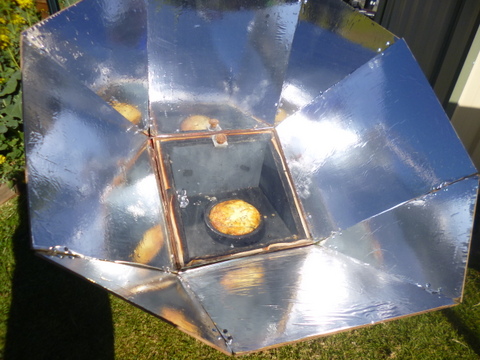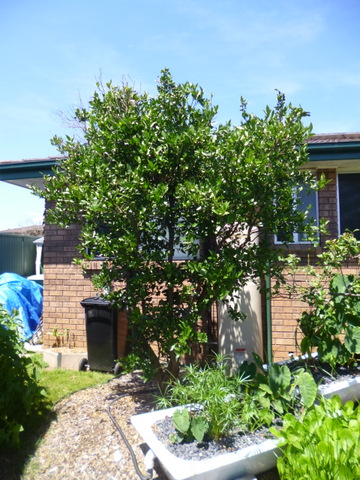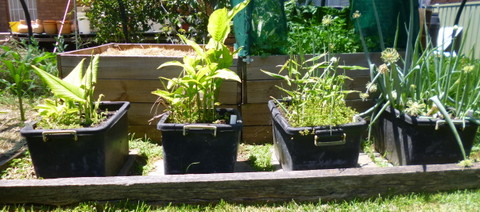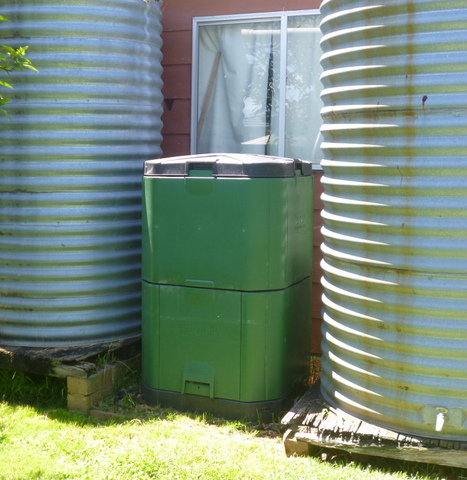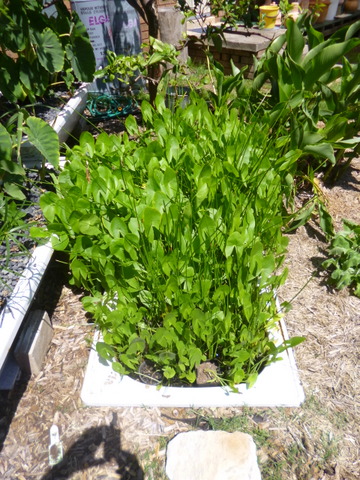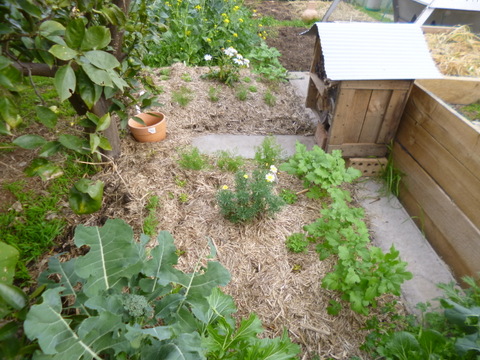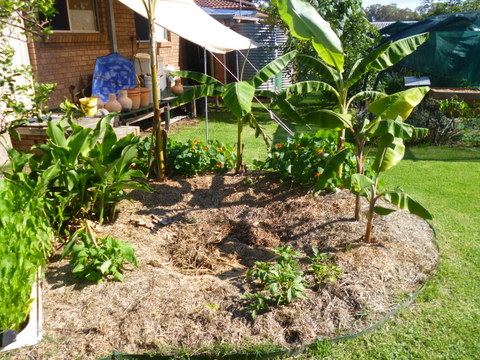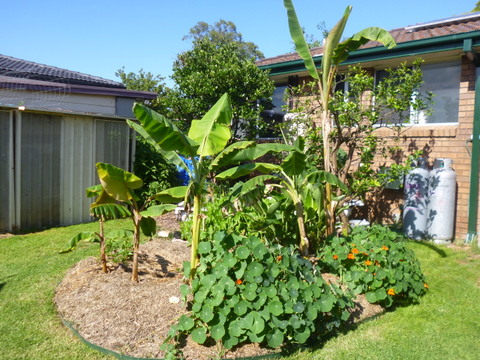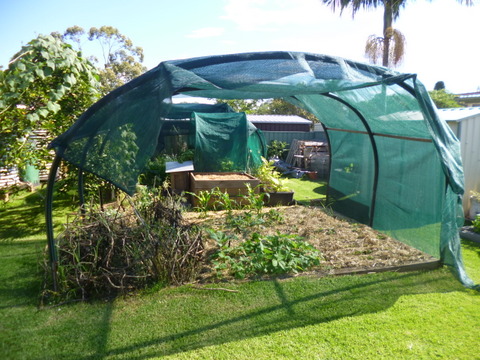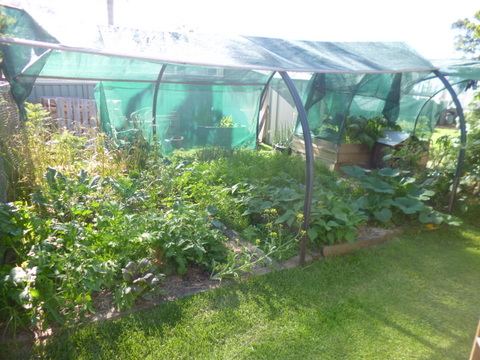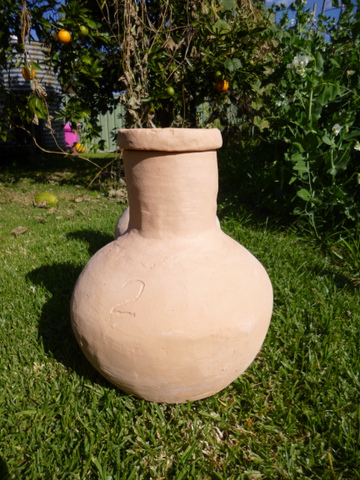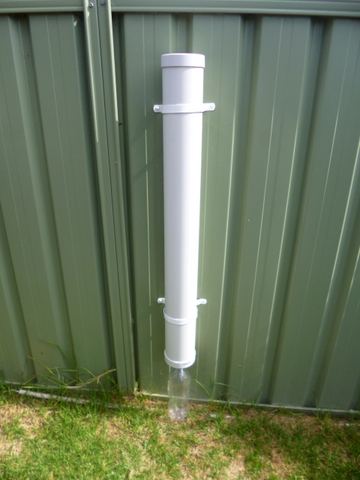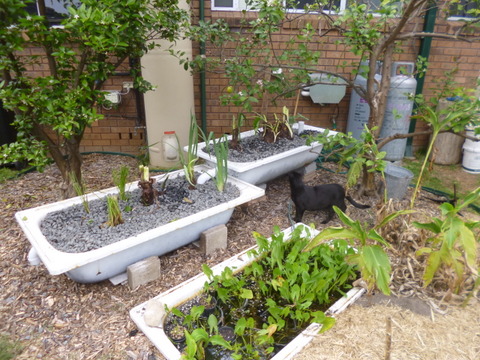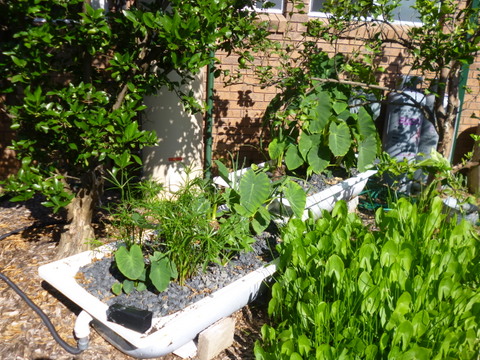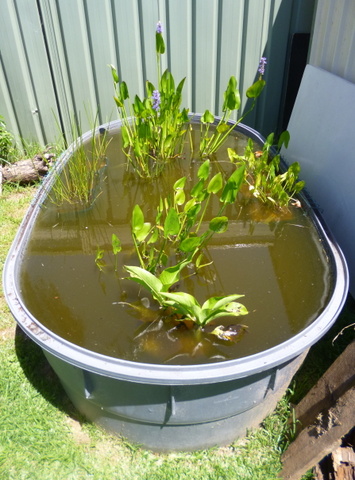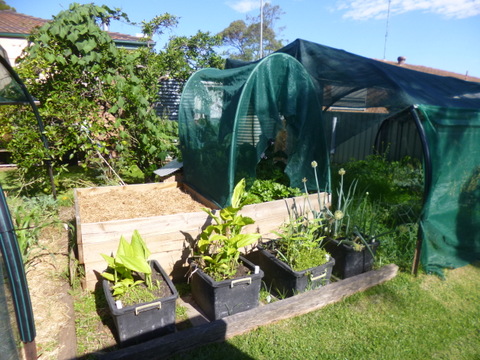Here are some of the changes over the last 4 years.
The Veggie Plots
There are 14 veggie plots all up and most of them are 2 metres by 1.2 metres, they are comprised of -
• Two sets of three against the southern fence, the southernmost set of three having a fixed trellis set up along the southern fence.
• Three long(3metre) ones in front of the choko tree,
• Four against the western fence which also have a fixed trellis on the fence. They were 2 metres long but are being extended to 3 metres long to give us an extra square metre per patch, at the moment two have been completed and two yet to be done.
• Of the two against the northern fence only the southern one remains. The northern one only got enough sun to grow stuff in summer so it has been decommissioned and is where the quail set-up is to be built.
The system has now been in place and operating for almost 10 years with only minor tweaking to make it more efficient.
The chook Tractor
The chook tractor is still in operation although it is now on its third iteration. The dark green paint on the previous one, while it looked quite fetching, meant that it heated up too much in summer. Also, because the bottom part was mesh all the way round it meant that the chooks got baked by the afternoon summer sun due to lack of shade. So to fix these problems the tractor is now painted a nice reflective gloss white and one long side goes down almost to the ground so that the chooks get shade from the afternoon sun. I think that this is the best of the three designs and if I were to have to rebuild it from scratch, this is the design I would use.
The Greenhouse
Our Rion greenhouse is still in use and performing well. There have been a few minor internal changes including some shelving down the end to increase storage space and greater use of capillary beds, but apart from that it is still working well after 8 years of use.
One other change has been that we now cover the greenhouse with shade cloth from late spring to late autumn. This reduces the heat to a tolerable level and means we can use the greenhouse to raise seedlings all year round.
The Retirement Village/The Worm shed
There have been no outrageous changes to the retirement village with the exception that we now grow a choko vine over it each summer to keep it cooler and also provide more chokos. Also a surplus internal door has been placed of the west facing mesh to reduce the summer heat on the retired chooks. The worm shed has not changed much either, and is still in operation as it was four years ago. This year I am hoping to progress the mushroom growing area and I am planning to use the flat roof of both the retirement village and the worm shed to install a green roof. That is the plan, we will see how it develops in practice. to the right of it is the Jerusalem artichoke bed, which continues to provide food for us during late autumn and winter.
The Tanks
There are three tanks in the back yard, two galvanised tall form 2500 litre tanks behind the garage and one 500 litre plastic tank that is connected to the shed on the north side of the house. There have been no meaningful changes to water storage tanks except the addition of a 200 litre black plastic drum being added to the outflow of the tanks behind the garage.
The Cob Oven
This never worked well and has been effectively decommissioned.
The Aquaponics set up
I did a back-of-an-envelope calculation and discovered that the set up would increase my electricity consumption by 40% so while the fish protein would be a good addition to our diet I was not prepared to pay the energy cost. The system has been decommissioned with the bathtub grow beds being pressed into service in a constructed wetland (see below) and the fish tank converted into a new productive water garden (also see below).
The solar oven
The solar oven is still in use although recently it underwent a refurb by replacing the main reflectors which had become dull but also warped so that not all of the sunlight was being reflected into the cooking area of the oven. The refurb went well and we have used it recently to cook quiches and roasts as well and bread and an impossible pie (dessert!).
The Fruit Trees
The lemon, mandarin and choko tree are still in place but the lemonade tree became very unhealthy and was removed to allow relocation of the banana circle from the front yard to the back yard.
The Potato Cages
These are also gone. Without importing a whole stack of biomass I was not able to keep up with the requirements for adding straw and hay etc. I figured if I had to buy it in there wasn’t much point. They have been replaced by two wicking beds, one is used for celery/silver beet/leaf crops and the other for potatoes/root crops and they are alternated as a form of crop rotation.
The Self Watering Containers
These are also still in place and operating well, located in front of the wicking beds.
The Composter
Likewise the composter is still working although it has been relocated to the area beside the greenhouse to allow space for other projects. We just recently were given another one, so that I can be building up one while the other is emptied for use.
The Water Garden
Again, it is still working well, producing water chestnuts and arrow as well as a bit of kang kong (water spinach).
New Stuff
The Insectary Area
The area between the choko tree and the two wicking beds which replaced the potato cages now sports an insectary area ie an area where there are garden features are designed to attract beneficial insects, that is to say insects which parasitise bad bugs and insects which assist with pollination of our fruits and vegetables. The area consists of a “bug hotel” and two beds of plants whose flowers attract both pollinators and predators. The idea is that if you want someone to come and stay you need to provide food and lodging, and the insectary area provides both. This has had a couple of observable effects, one being the disappearance of whitefly from the brassicas and last season, while we got plenty of white cabbage moth around, there were very few caterpillars.
Banana Circle
As mentioned previously the banana circle has been relocated to the back yard. It was never a success in the front yard due to too much shade, poor soil and lack of water. The new area is in full sun, the soil has been built up with compost and other organic materials to form the mound and there is access to 2 sources of greywater. I hold out great hopes and see plenty of bananas in our future!
Veggie Bed Sun Covers
The western Sydney summer sun is not getting any more forgiving and in fact may be getting harsher, so a couple of years ago I bit the bullet and put sunshades over the central veggie beds which comprise the greater part of our growing area. I hammered in some star posts, then slid loops of 50mm irrigation pipe over the top, connected the loops with some timbers and then covered the lot with 50% shade cloth. It works a treat, still allowing the plants to grow on those hot summer afternoons and reducing the amount of water we need apply. The four beds along the back fence are on the plant to receive a similar covering this year.
Clay Pot Irrigation
To improve the efficiency of watering I have been making unglazed terracotta pots which are then buried in the veggie patches. By keeping them full of water we can put the water in the plants’ root zone where the water is needed. This is an ongoing project, with almost half the beds irrigated in this way at the moment.
Fertiliser Extraction Tube
(as seen on TV!) While the majority of the nutrients which the veggies need to grow is provided by the chook tractor, some extra fertilisation of the young seedlings helps them get away to a good start. To this end I have some 100mm tube attached to the fence which gets filled with comfrey leaves, stinging nettle and other dynamic accumulators. This has a weight placed on top and as they rot down a nutrient rich black liquid drains out into a bottle at the bottom. This liquid is then diluted to the colour of weak tea and applied the seedlings by watering can.
Constructed Wetland
Due to dissatisfaction with our performance around greywater usage we did two things – the first was to complete the greywater line from the spa-bath to the newly relocated banana circle. The second was to make a constructed wetland. The wetland was made from two bathtubs filled with gravel and then planted out to water plants. The idea is that greywater from our washing machine and dishwasher discharges into the laundry sink, which acts as a surge tank. From there it flows by gravity through to the bathtubs and then out to the fruit trees or the banana circle, having had a considerable amount of pollutants removed along the way.
New Productive Water Garden
To increase our production of water plants I took what was the fish pond part of the aquaponics system and have planted it out to some more water plants including papyrus, pickerel rush, arrow leaf, water chestnuts and kang kong. I am also looking out for what else we can grow. We are growing arrowroot near the bath water garden and some wound up in the water, but was still growing! I removed it, potted on and am seeing how it grows fully submerged in this new water garden.
The Wicking Beds
These are the beds that replaced the potato cages mentioned above. One of the beds is used for potatoes and the other is used primarily for leaf crops. The leaf crop bed has a 50% shade cloth cover to assist in growing through the hot part of the year. The reduced amount of sunlight allows the leaf crops to grow more succulently and with milder flavour than if exposed to the full force of the western sun. Each of the beds was made out of two 1.2m x 1.2m AQC preserved timber veggie beds, the bottom one lined with plastic and with 20mm blue metal gravel (the gravel was originally removed from the aquaponics grow beds when I decommissioned the aquaponics set up). The growing medium is composed of bought in organic mix and mushroom compost.



